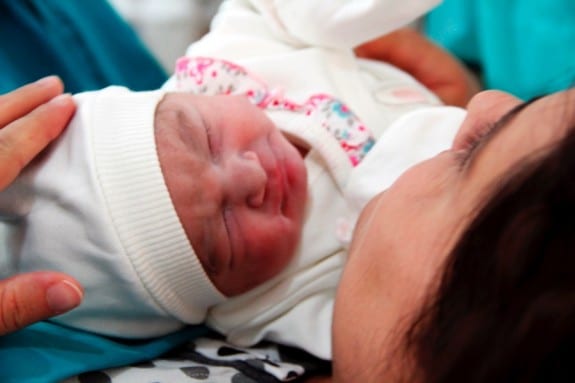The leading cause of hospital admission in the United States is childbirth. And yet there is a huge disparity in the actual cost of childbirth a new study published in the journal Health Affairs finds.
Xia Xu, assistant professor in the Department of Obstetrics, Gynecology & Reproductive Sciences at Yale School of Medicine and colleagues analyzed data on nearly 275,000 low-risk childbirths in 463 hospitals across the country. Costs of those maternity stays varied anywhere from $1,200 to $12,000 dollars. More specifically, uncomplicated vaginal births costs ranged from $1,183 to $11,819. Cesarean sections costs varied between $1,249 and $13,688.
“Childbirth care is very complex,” Xu told CBS News. “It’s unique in the sense that other conditions in healthcare usually take care of one patient, but childbirth takes care of two, so many factors can influence quality and cost.”
Yet, interestingly enough, factors that were looked at by the study (teaching status, location, size, ownership, cesarean delivery rate, maternal morbidity rate, length of stay, etc.) seemed to only account for about 13 percent of all variation costs in the hospitals. And even more baffling was that factors one might associate with decreased rates sometimes actually had increased rates.
For example, costs tended to be higher at hospitals with low proportions of births covered by Medicaid, as were those that had non-federal government or nonprofit ownership. Researchers also found that facilities with higher maternal death rates and cesarean deliveries had higher estimated costs. This directly contradicts the idea of spending more for better quality of care.
“We don’t know exactly why this is. It could be because hospitals that are doing more interventions need to use more resources, or maybe a hospital is spending more because it is trying to improve the quality of care,” Xu said. “[But] things are not as simple as we hoped. There’s a lot of variation in how hospitals do things when to intervene, policies to discharge . . . and there’s limited information on what happens during this process.”
So, while America may have made some progress in healthcare, there appears to be a lot more that needs to be done. Xu says that, in future studies, she hopes to look at the physician’s side of the cost and the overall cost of mother and baby (as well as other things) to maybe see if there are some ways to lower the overall costs.
“Hospital practices might be an important contributor to the variation in costs, and there may be opportunities for cost reduction,” Xu said. “These may include safely reducing cesarean deliveries, increasing the coordination of care, and emphasizing the value of care through new payment and delivery systems.”
Related Articles:








I find it hilarious that someone did an actual study on this and still hasn’t figured it out. Higher birth costs are caused by more interventions which cause more c – sections which cause more deaths. It’s pretty simple.